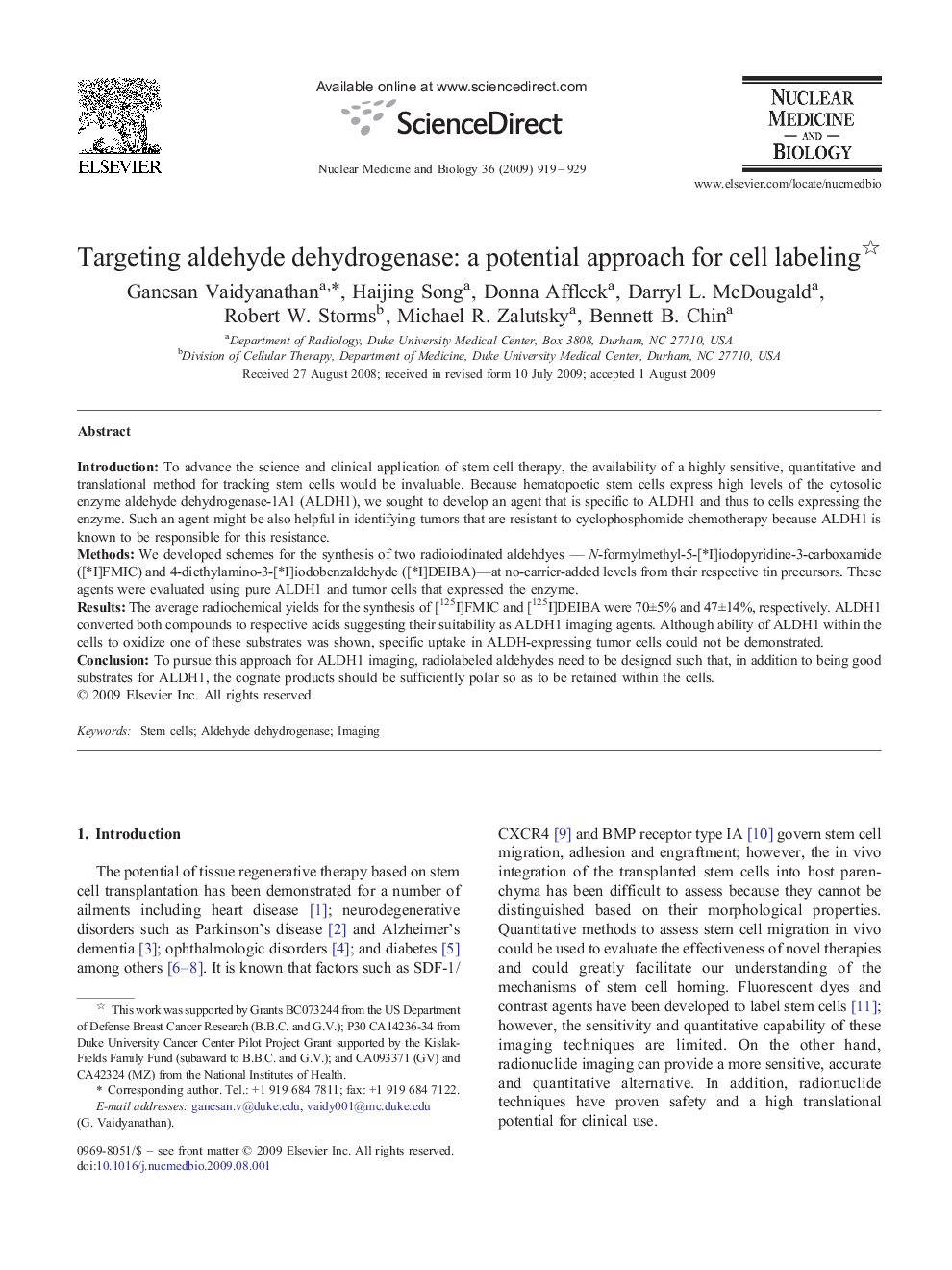| Article ID | Journal | Published Year | Pages | File Type |
|---|---|---|---|---|
| 2154710 | Nuclear Medicine and Biology | 2009 | 11 Pages |
IntroductionTo advance the science and clinical application of stem cell therapy, the availability of a highly sensitive, quantitative and translational method for tracking stem cells would be invaluable. Because hematopoetic stem cells express high levels of the cytosolic enzyme aldehyde dehydrogenase-1A1 (ALDH1), we sought to develop an agent that is specific to ALDH1 and thus to cells expressing the enzyme. Such an agent might be also helpful in identifying tumors that are resistant to cyclophosphomide chemotherapy because ALDH1 is known to be responsible for this resistance.MethodsWe developed schemes for the synthesis of two radioiodinated aldehdyes — N-formylmethyl-5-[*I]iodopyridine-3-carboxamide ([*I]FMIC) and 4-diethylamino-3-[*I]iodobenzaldehyde ([*I]DEIBA)—at no-carrier-added levels from their respective tin precursors. These agents were evaluated using pure ALDH1 and tumor cells that expressed the enzyme.ResultsThe average radiochemical yields for the synthesis of [125I]FMIC and [125I]DEIBA were 70±5% and 47±14%, respectively. ALDH1 converted both compounds to respective acids suggesting their suitability as ALDH1 imaging agents. Although ability of ALDH1 within the cells to oxidize one of these substrates was shown, specific uptake in ALDH-expressing tumor cells could not be demonstrated.ConclusionTo pursue this approach for ALDH1 imaging, radiolabeled aldehydes need to be designed such that, in addition to being good substrates for ALDH1, the cognate products should be sufficiently polar so as to be retained within the cells.
